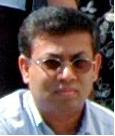 - I do not believe in the current concept of God and Creation.
- I do not believe in the current concept of God and Creation.
The theory of the Big Bang was a giant leap in understanding the Universe's origin. However, like the concept of God Creating this Universe, the Big Bang theory produced another big question: What happened before the Big Bang? One of the reasons I liked the cyclic model instead of the Big Bang in the standard model is the infinite Big Bang by the collision of two membranes (a scientific hypothesis now). This does not mean that the standard model is wrong. The new hypothetical cyclic model is an extension of the standard model. Extra dimensions and colliding universes are the by-products of String theory, which is gaining momentum in unifying the theory of relativity and quantum theory. I like to know the internals on how and why rather than believe anything just by ‘faith.’
- I do not believe science and religion are on a warpath (I mean, do not have conflicts of interest).
Religious faith and scientific quests are trying to reach the same destination. However, the only difference is they both took different routes to reach the goal. There is nothing like the right route and the wrong route. Both ways are right. You have the choice to choose the path for your Journey.
“My journey started long before I was born, and it will not end with my death, The Journey towards the Eternity - in search of our existence.”
The Final Destination
Finding God is not the destination in my model. Understanding the concept of being part of the ‘WHOLE’ is impossible if the thought ‘I’ is buried in our minds. We need to detach from ‘Self’. That is what Christ, Buddha, and others said. ‘Find the truth’
The problem of Creation by the intelligent designer results in a Creator and its by-products (Universe, earth, humans, animals, etc.). Like a software engineer who creates a software product or an Architect who builds a house. This raises the fundamental question:
1. What is primary? Matter or consciousness?
2. Is there a beginning for time?
- Wholeness, Oneness & Holographic Universe
The concept of ‘Wholeness’ or 'Oneness' will break the idea of God as the Omnipotent, then there is God (the all-power, all-knowing entity, the humans (emotional species), trees, animals, birds, etc. The concept of ‘Self’ equates to individuality, character, ego, etc., and places us in a localized environment created by our conscious mind. We separate the thinker from the thought, which reflects, in our modern language, is based on the pattern “subject-verb-object” that clearly separates the subject from the object, Whereas the key is the verb that makes the connection.
In this model, everything is localized, while quantum physics and Eastern mysticism talk about non-localization, where everything is connected. The dualism in the Cartesian model merges into ONE, where the Universe is considered one giant hologram.
A hologram is a 3D picture. The remarkable feature is that if a hologram (picture) of an apple is cut into two, each half of the print will contain the entire 3D image of the apple. If you slice the (apple) two halves again, it will still include the ‘whole’ 3D picture of the apple. Compared to a conventional image of an apple, if you cut it into half, each half contains half of the apple picture.
David Bohm proposed the concept of the Universe as a hologram after the experiment by Alain Aspect (in 1982). They (Aspect and his team) discovered that under certain circumstances, subatomic particles such as photons (bosons) can instantaneously communicate with each other regardless of the distance separating them. This is irrespective of whether they are 10 feet apart or on the other side of the Universe. This odd behavior is called the EPR paradox, named after Einstein, Podolsky, and Rosen's thought experiment, proposed in 1935. However, this violates Einstein’s principle that nothing can travel faster than the speed of light. Bohm believes that Aspect’s findings imply that objective reality as we know or experience (with our senses) does not exist.
The concept of Oneness goes far beyond our localized thought process where we create a virtual world to place our beliefs and ourselves, and as per Hinduism, this world (virtual) is known as ‘Maya,’ an illusion. Understanding this reality helps us to get into the altered state, the Final Destination.
Destination in Religion – Nirvana
Here is an exciting thought. If you don’t need a camera lens to take a picture of 3 3-dimensional apples using the holographic method (Read the holography technique), do we really need our eyes?
On Heaven & Hell
If I had a choice, I would choose Hell. For the past 14 years, I have been playing the role of a software engineer/architect in building new software products and bug-fixing existing software. So, I assume that If there is a Hell, then it must be Heaven gone haywire with bugs beyond repair, and God decided to dump it and create a new Heaven fresh and made sure that he didn’t repeat the same mistakes.
Now, why did I choose Hell? Simple. To fix the bug!
To fix the bug, I need to understand the internals of Hell, which helps me understand the internals of Heaven. What would happen if I could fix it! Get promoted from Developer to Architect! Then, get venture capital funding to build another Heaven. If it ended up being hell, then send Consultants to fix it and charge an hourly rate :-)





